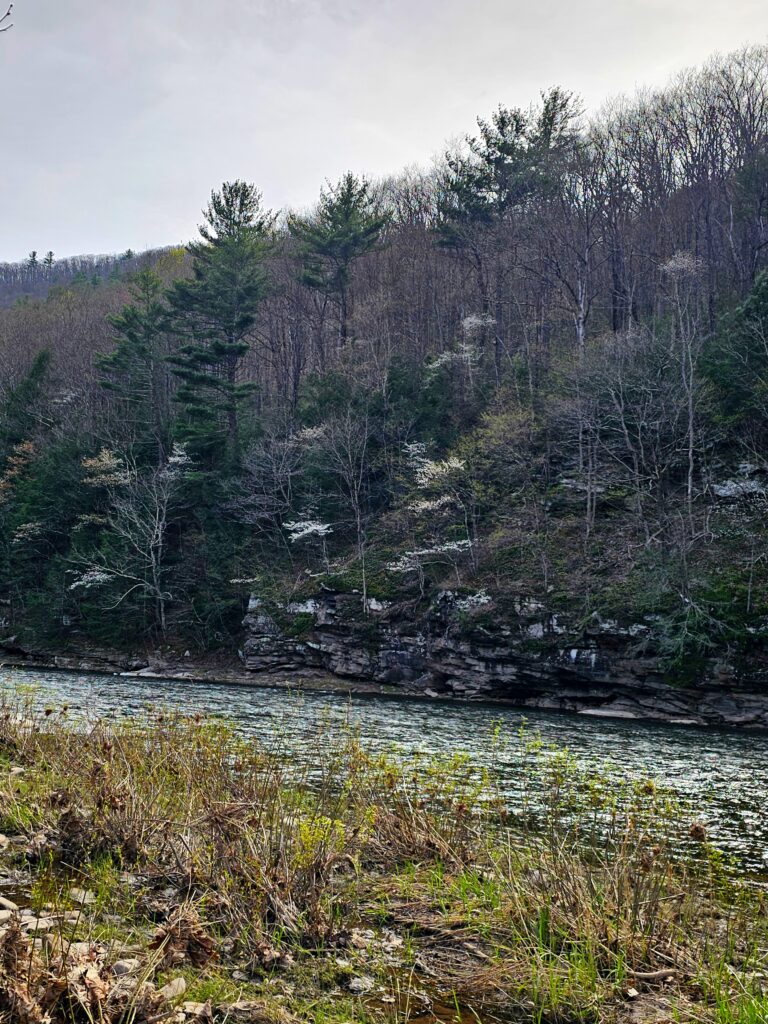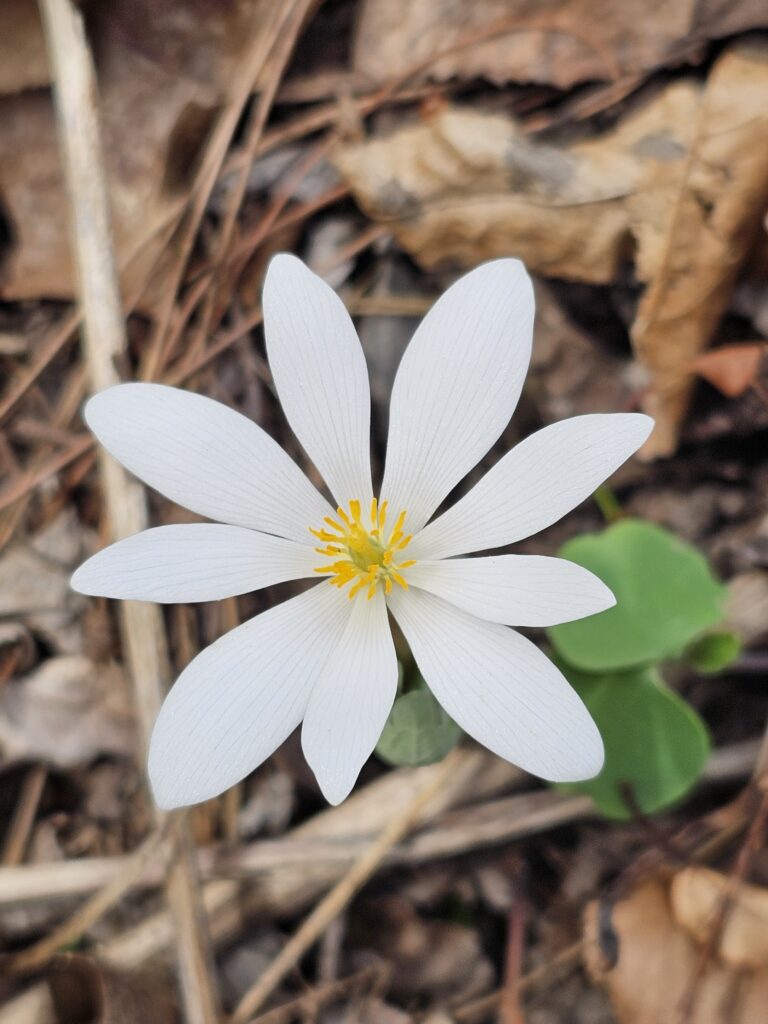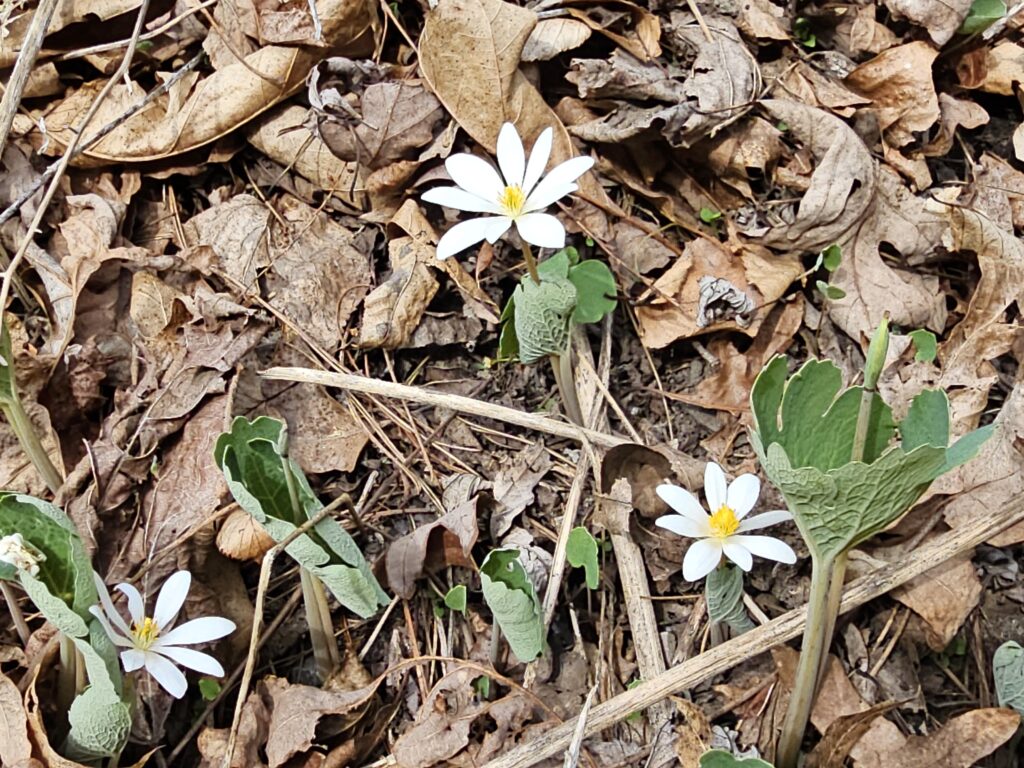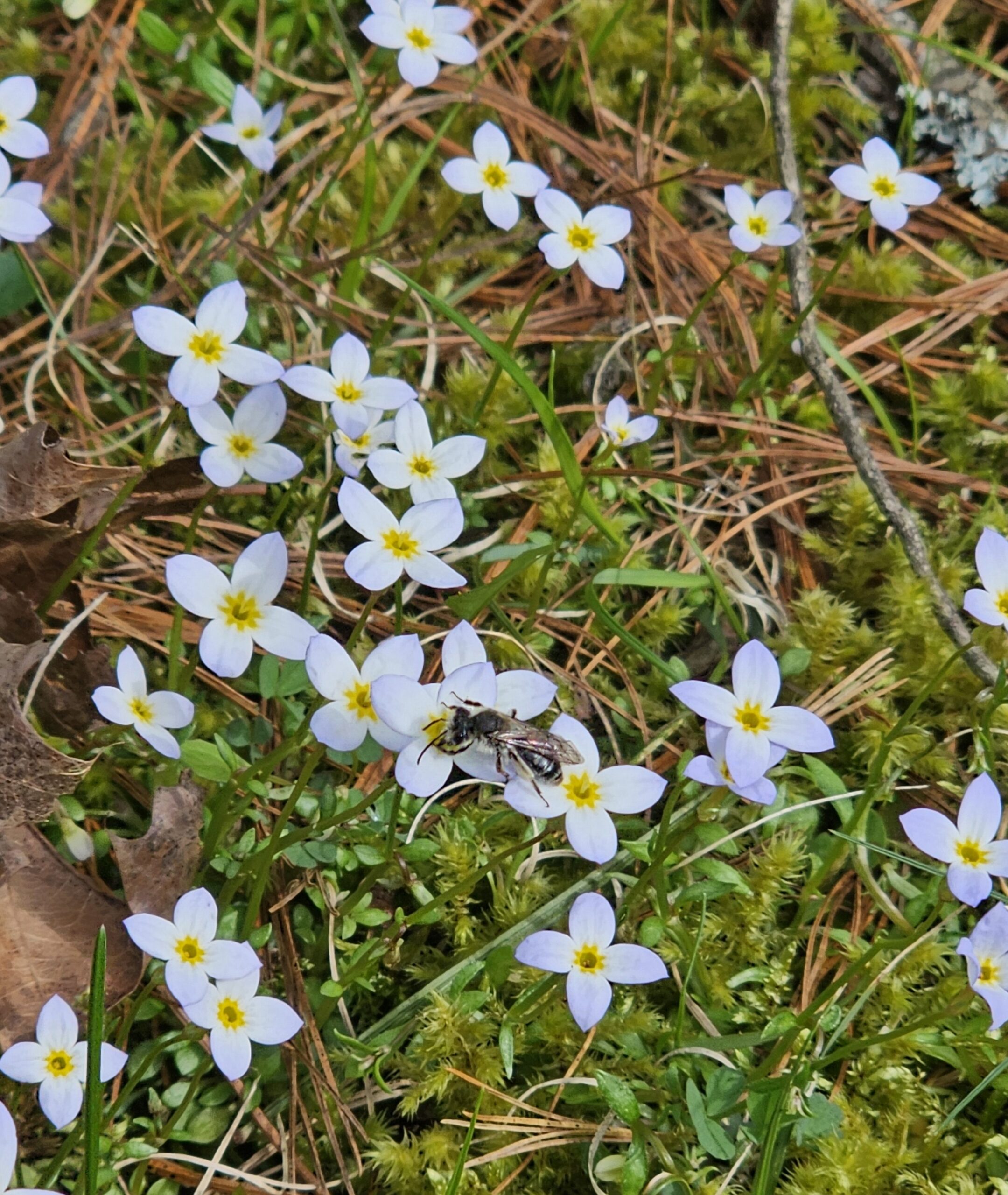Join us every Friday for an exploration of the Northcentral Pennsylvania Conservancy’s (NPC) conservation easements. Through “Field Journal Fridays,” we invite you to discover and connect with the natural world around us. Conservation easements are essential for maintaining farms, woods and all the different types of habitats they provide.
Each week we’ll share some of the natural highlights from Land Steward Specialist, Sara Schlesinger’s, annual monitoring visits to NPC’s conservation easements. Be sure to follow along on these #FieldJournalFridays!

To kick things off we’re exploring the Blackwell conservation easement in Tioga County. Spanning nearly 8 acres, this property is framed by the Pine Creek Rail Trail to the east and Pine Creek to the west – conserving the scenic beauty of the region. Moreover, the easement offers a greenway along Pine Creek, inviting public access for anglers, birdwatchers, and strollers alike to enjoy the splendors of Pine Creek.
Observation #1: Serviceberry
The native Serviceberry is one of the earliest flowering trees in the state, heralding the arrival of spring with its delicate white blossoms. This early bloomer serves as a vital nectar source for pollinators awakening from winter dormancy.


Observation #2: Bloodroot
Bloodroot is a native ephemeral wildflower – meaning it only blooms for a few days – that can be found in woodland habitats across the state. It’s one of the earliest spring blooms, and its white flowers with yellow centers provide a striking contrast against the leaf litter of the forest floor. The roots produce a blood-red sap that was used as a dye by indigenous peoples.


Observation #3: Bluets
Bluets are delicate, native wildflowers that dot meadows, fields, and woodland edges with their charming blue blooms. Typically blooming in spring and early summer, they also play a role in supporting pollinators early on.
While bluets and bloodroot are not considered rare in Pennsylvania, like many wildflowers, they may face threats from habitat loss, invasive species, and land development.

Observation #4: Dark-eyed Junco
A common site in Penn’s Woods, Dark-eyed Junco are among the most abundant forest birds of North America, ranging from Alaska and Canada, to Florida and Mexico.

Follow NPC on Facebook and Instagram for more behind-the-scenes updates from Sara’s conservation easement visits and other NPC happenings!

